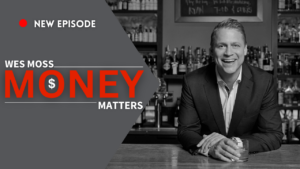If we look into our economic history books ten or twenty years from now, how might 2014 be remembered? Maybe as, “the year that oil prices crashed, despite a strong US economy,” or perhaps, “the year when nearly every economist on Wall Street predicted a rise in interest rates that never came.” It could even be (my personal favorite), “the 2014 bull market that nobody loved.”
Whichever way it’s written, the point is that it’s now history. What I’m more interested in is what we can expect from 2015.
The Investment Committee at my company, Capital Investment Advisors, worked together to hone in on what we believe will be the 10 most impactful themes for investors over the next 12 months:
1. The US Economy – The US will slow from the torrid pace that closed out 2014, but not completely fall apart. Most likely it will be sufficient to keep corporate earnings and profits growing and the unemployment rate headed to below 5.5 percent. However, with Japan in recession and the European Union on the verge of recession, the US can’t completely “decouple” forever. Look for a solid 2015, but not a runaway train.
2. Stocks over Bonds (again) – The bull market in stocks is now more than five years old, but bull markets don’t end without a major economic event, i.e. a US recession. Remember that a recession is negative growth for two full quarters. With the 5% surge we ended on in 2014 combined with low energy prices for consumers and companies alike, it’s likely we’ll see stocks continue to rise. On the other side of this coin, as interest rates make a push higher in 2015, bonds (in general) will be presented with a headwind – making a “flat” year for bonds likely. As rates move higher throughout the year, bonds may look attractive again in late 2015 (with higher interest rates).
3. Interest rates finally climb – This is something that we have been expecting for more than a year now. With the Federal Reserve’s “taper” over, and Janet Yellen and co. already forecasting a rate rise in mid-2015, it is likely that we will see interest rates in more “normal” territory. This means rising to the 3.5 percent range for 10 year Treasury bonds.
4. Less Smooth Sailing – Yes, we almost saw a full 10 percent correction during the fall of 2014, but we spent much of the year with relatively low volatility. As the economy adjusts to higher interest rates in 2015, stock market volatility will likely pick up.
5. Ultra-Low Inflation – With the precipitous drop in US oil prices towards the end of 2014, lower energy input prices will filter through the entire economy. Manufacturing costs will decline, what consumers pay for gas at the pump will stay low, transportation, shipping, construction, and petroleum based products will all moderate driving the consumer price index closer to a very low historical rate of 1 percent.
6. Sectors to watch – Lower oil prices and a solid US economy should bode well for the consumer discretionary, financial, healthcare, and technology sectors. These sectors have historically performed well (relative to other sectors) in the year following a large decline in oil/energy prices.
7. Housing stays steady – The Millennial generation is expected to spend $1.6 trillion over the next five years on home purchases. This will continue to support housing prices as Millennials move out of their parent’s basements and start owning homes of their own.
8. Drama in the Middle East and Russia – Dramatically lower oil prices will continue to take a toll on oil reliant economies. Saudi Arabia will continue to produce oil regardless of how low prices go but can only fully fund its suite of rich social programs with oil at $87/barrel. Likewise the Russian economy needs oil above $100/barrel for a balanced budget. This means, most likely, both regions will see unrest as their citizens adjust to more economic strife and their government’s increasingly limited ability to “contribute” to keeping the peace.
9. European Recession – With aging demographics and restrictive labor laws continuing to plague many EU nations, a full blown recession overseas is not unlikely in the coming year.
10. Tech like it’s 1999 – Unlike the late 90s, startup tech companies are now actually expected to generate revenue and have the true potential for profit before garnering a sky high valuation. However, with the (still private) ride sharing service Uber boasting a $41 billion valuation, the price tag for other companies like Instacart are beginning to seem astronomical. Instacart is a wonderful idea and service (which I’ve written about before), but it’s still relatively small footprint seems hardly supportive of a now $2 billion valuation. This tells us that startup-chasing VC firms are beginning to create an environment reminiscent of the late 1990s. Look for the tech “startup bubble” to continue to inflate in 2015.
Bottom Line
As always, I’ll continue to keep an eye on the markets for you as we go into 2015, and update you here on any trends we see that spring up. I hope you have a wonderful and profitable 2015!
Disclosure: This information is provided to you as a resource for informational purposes only. It is being presented without consideration of the investment objectives, risk tolerance or financial circumstances of any specific investor and might not be suitable for all investors. Past performance is not indicative of future results. Investing involves risk including the possible loss of principal. This information is not intended to, and should not, form a primary basis for any investment decision that you may make. Always consult your own legal, tax or investment advisor before making any investment/tax/estate/financial planning considerations or decisions.
Read the original article here.








